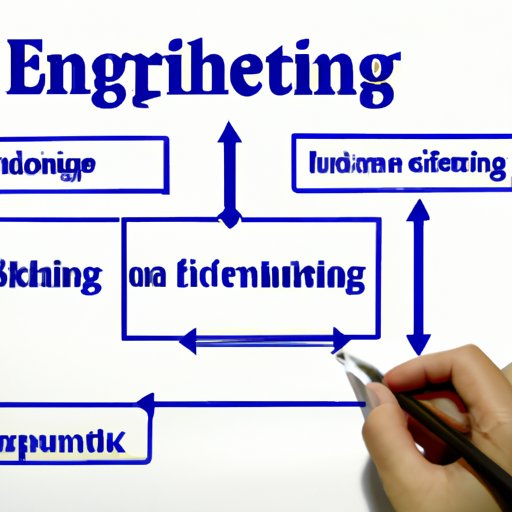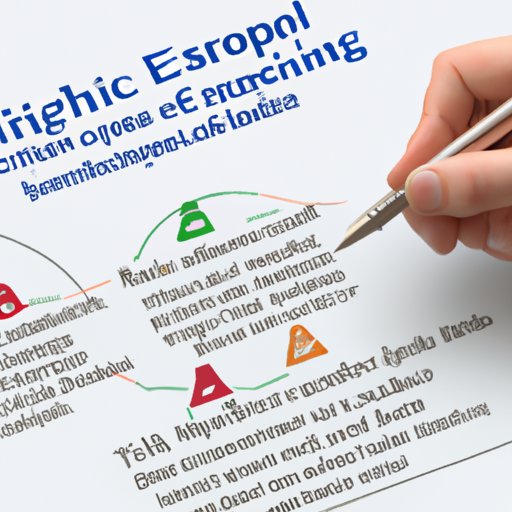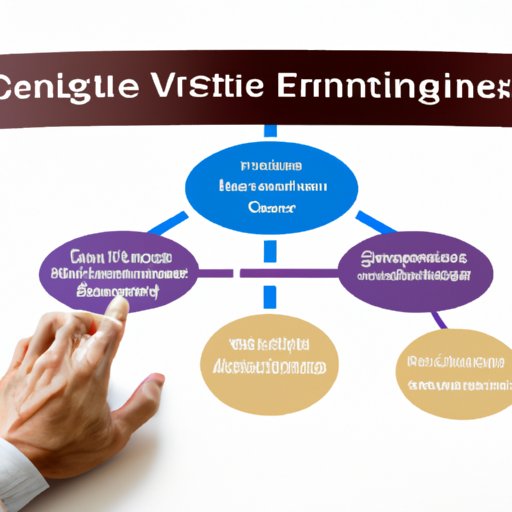Introduction
Making ethical decisions is a critical part of any organization’s success. An ethical decision making framework provides a structured approach for identifying and addressing ethical issues in a consistent manner. This framework can help organizations make decisions that are both legally and morally sound, while also meeting their business objectives.
Definition of an Ethical Decision Making Framework
An ethical decision making framework is a set of guidelines used to evaluate and address ethical considerations when making important decisions. This framework outlines the core values and principles that should guide decision-making, as well as criteria for assessing potential consequences. By following an ethical decision making framework, organizations can ensure that their actions are consistent with their stated values and goals.

Overview of the Benefits of an Ethical Decision Making Framework
There are numerous benefits to establishing an ethical decision making framework. For example, it can help organizations:
- Develop a culture of trust and transparency
- Establish clear protocols for addressing ethical issues
- Foster a sense of responsibility and accountability among employees
- Reduce the risk of unethical behavior and legal action
- Build long-term relationships with stakeholders
- Create competitive advantages through ethical decision making
Step-by-Step Guide to Developing an Ethical Decision Making Framework
Developing an effective ethical decision making framework requires careful consideration and attention to detail. The following steps provide a guide for establishing an ethical decision making framework:
1. Identifying the Values and Principles That Will Guide Decisions
The first step in developing an ethical decision making framework is to identify the core values and principles that will guide decision-making. These values and principles should be based on the organization’s mission and vision, as well as the goals of the stakeholders involved. It is important to consider the impact of the decisions on all relevant parties and to ensure that the values and principles reflect the organization’s commitment to ethical behavior.
2. Establishing Criteria for Assessing Ethical Considerations
Once the core values and principles have been identified, the next step is to establish criteria for assessing ethical considerations. This may include criteria for weighing the rights of individuals, the interests of the organization, and the public good. It may also include criteria for determining which course of action is most likely to produce the best outcome for all involved.
3. Assessing Potential Consequences of a Decision
The third step is to assess the potential consequences of each decision. This includes considering how the decision will affect the organization, its stakeholders, and the public at large. It is important to consider the short-term and long-term implications of the decision, as well as the potential risks and opportunities associated with it.
4. Evaluating Alternative Courses of Action
Once the potential consequences of each decision have been assessed, the next step is to evaluate alternative courses of action. This involves considering the pros and cons of each option and assessing the likelihood of achieving the desired outcome. It is important to consider the potential impact of each option on the organization, its stakeholders, and the public at large.

Applying an Ethical Decision Making Framework in Practice
Once an ethical decision making framework has been established, it is important to apply it in practice. This involves understanding the implications of the decision, considering the impact on stakeholders, and implementing the chosen course of action. Here are some key considerations for applying an ethical decision making framework in practice:
1. Understanding the Implications of a Decision
It is important to understand the potential implications of a decision before taking action. This means considering the legal, financial, and reputational risks associated with the decision, as well as any potential unintended consequences. It is also important to consider the potential impact on the organization’s stakeholders and the public at large.
2. Considering the Impact on Stakeholders
When making a decision, it is important to consider how it will affect the organization’s stakeholders. This includes considering the potential impact on employees, customers, suppliers, and other relevant parties. It is important to understand the needs and expectations of stakeholders, and to ensure that the decision is one that they can support.
3. Implementing the Chosen Course of Action
Once the decision has been made, it is important to take action. This involves developing a plan for implementation and ensuring that all parties involved are aware of the decision and their responsibilities. It is also important to monitor the progress of the decision and to adjust course if needed.
Examining the Impact of Ethical Decision Making Frameworks
Ethical decision making frameworks can have both positive and negative impacts on organizations. Here are some of the potential risks and benefits associated with adopting an ethical decision making framework:
1. Identifying Potential Risks Associated With Ethical Decision Making
Adopting an ethical decision making framework can expose organizations to potential risks. For example, if the framework is not applied consistently or if decisions are not properly monitored, there is a risk of unethical behavior. There is also a risk of legal action if a decision is found to be illegal or if it is not in compliance with regulations.
2. Exploring the Positive Outcomes of Ethical Decision Making
At the same time, ethical decision making can also have positive outcomes. Research suggests that ethical decision making can lead to improved organizational performance, better customer relationships, and increased employee engagement. It can also build trust with stakeholders, create competitive advantages, and improve an organization’s reputation.

Analyzing the Challenges of Adopting an Ethical Decision Making Framework
Although there are many potential benefits to adopting an ethical decision making framework, there are also challenges that must be addressed. Here are some of the most common challenges associated with establishing an ethical decision making framework:
1. Overcoming Cultural Differences
Organizations operating in different countries may face cultural differences that can complicate ethical decision making. For example, what is considered acceptable in one culture may be considered unethical in another. It is important to understand the cultural context of a decision and to ensure that the framework takes into account the values and norms of the local culture.
2. Addressing Conflicting Values
Organizations may also face conflicts between the values and principles outlined in the framework and those of the stakeholders involved. It is important to identify and address these conflicts in order to ensure that the decision is consistent with the organization’s values and goals. In some cases, compromise may be necessary in order to reach an agreement.
3. Mitigating the Risk of Unethical Behavior
Finally, it is important to ensure that the framework is followed in practice. This involves monitoring decisions, enforcing policies and protocols, and providing training and education on ethical decision making. It is also important to ensure that employees feel empowered to speak up if they are concerned about a decision or if they believe it to be unethical.
Identifying Best Practices for Establishing an Ethical Decision Making Framework
Establishing an effective ethical decision making framework requires careful planning and dedication. Here are some best practices for creating an ethical decision making framework:
1. Training Employees on Ethical Decision Making
It is important to ensure that employees have the knowledge and skills necessary to make ethical decisions. This involves providing training on the organization’s ethical decision making framework and on the potential consequences of unethical behavior. It is also important to provide employees with guidance on how to identify and address ethical issues.
2. Establishing Clear Protocols and Policies
It is important to establish clear protocols and policies for addressing ethical issues. This includes setting out the process for making decisions, identifying who is responsible for making decisions, and outlining the consequences of unethical behavior. It is also important to ensure that the protocols and policies are regularly reviewed and updated.
3. Creating a Culture of Accountability
Finally, it is important to create a culture of accountability within the organization. This involves holding employees accountable for their actions and providing clear channels for reporting unethical behavior. It is also important to recognize and reward ethical behavior and to ensure that employees feel supported and empowered to make ethical decisions.
Conclusion
An ethical decision making framework can help organizations make decisions that are both legally and morally sound. It provides a structured approach for evaluating and addressing ethical considerations and can help organizations develop a culture of trust and transparency. Establishing an effective ethical decision making framework requires careful planning and dedication, but the rewards are worth the effort. By following the steps outlined in this article and implementing best practices, organizations can create a robust and effective ethical decision making framework.
(Note: Is this article not meeting your expectations? Do you have knowledge or insights to share? Unlock new opportunities and expand your reach by joining our authors team. Click Registration to join us and share your expertise with our readers.)
